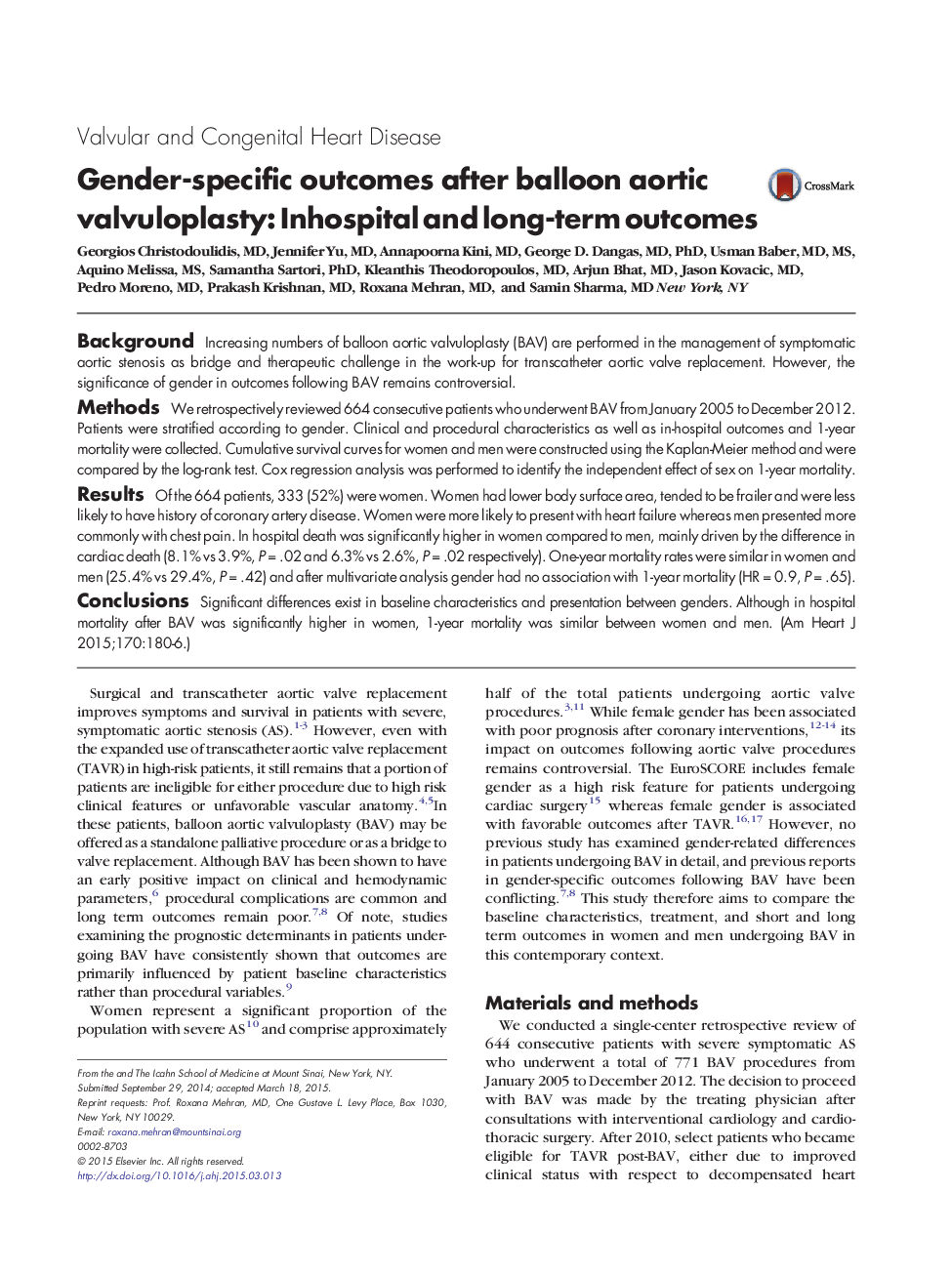| Article ID | Journal | Published Year | Pages | File Type |
|---|---|---|---|---|
| 5928176 | American Heart Journal | 2015 | 7 Pages |
BackgroundIncreasing numbers of balloon aortic valvuloplasty (BAV) are performed in the management of symptomatic aortic stenosis as bridge and therapeutic challenge in the work-up for transcatheter aortic valve replacement. However, the significance of gender in outcomes following BAV remains controversial.MethodsWe retrospectively reviewed 664 consecutive patients who underwent BAV from January 2005 to December 2012. Patients were stratified according to gender. Clinical and procedural characteristics as well as in-hospital outcomes and 1-year mortality were collected. Cumulative survival curves for women and men were constructed using the Kaplan-Meier method and were compared by the log-rank test. Cox regression analysis was performed to identify the independent effect of sex on 1-year mortality.ResultsOf the 664 patients, 333 (52%) were women. Women had lower body surface area, tended to be frailer and were less likely to have history of coronary artery disease. Women were more likely to present with heart failure whereas men presented more commonly with chest pain. In hospital death was significantly higher in women compared to men, mainly driven by the difference in cardiac death (8.1% vs 3.9%, P = .02 and 6.3% vs 2.6%, P = .02 respectively). One-year mortality rates were similar in women and men (25.4% vs 29.4%, P = .42) and after multivariate analysis gender had no association with 1-year mortality (HR = 0.9, P = .65).ConclusionsSignificant differences exist in baseline characteristics and presentation between genders. Although in hospital mortality after BAV was significantly higher in women, 1-year mortality was similar between women and men.
